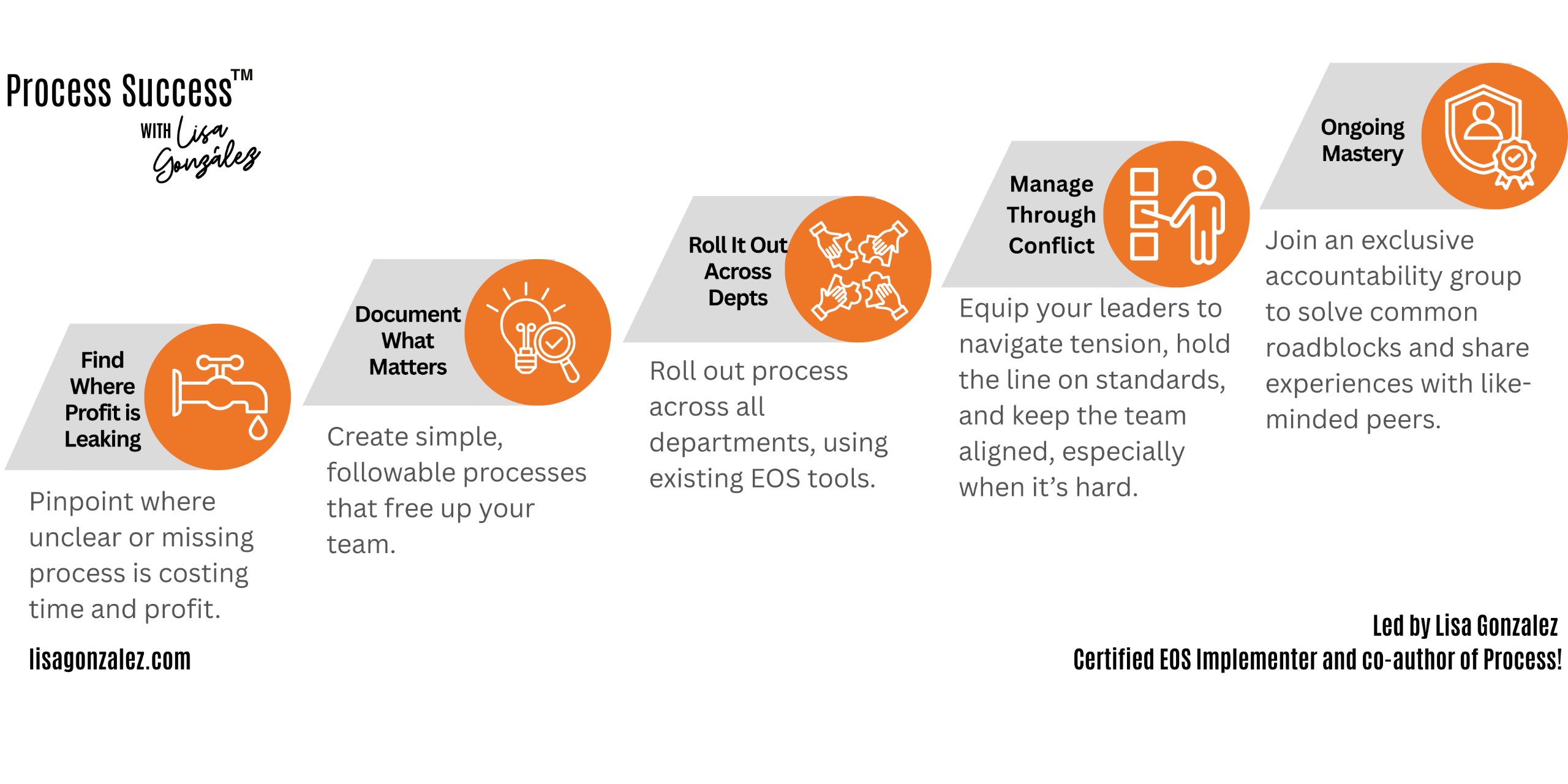Build a Winning Team: Leadership & Culture That Drives Results
Great businesses are built by great teams. Create a culture of accountability, clarity, and high performance.
Your business is only as strong as your team. Without clear expectations, consistent training, and a culture of accountability, even the best strategy will fail. Learn how to build a leadership team and company culture that executes with excellence.
Why Teams Fail to Execute
Common challenges: Lack of accountability, unclear expectations, inconsistent training
- People don't know what "right" looks like
- Leadership team not aligned
- Culture happens by accident, not by design
- EOS® perspective: Right people in right seats with clear accountability
5 Steps to Create a High-Performance Culture
1. Define Your Core Values
- What behaviors do you reward and recognize?
- Use core values to hire, fire, review, and reward
- EOS® approach: 3-7 core values that define your culture
2. Get the Right People in the Right Seats
- Right People: Share your core values
- Right Seats: Have the capacity, desire, and ability (GWC™)
- Don't settle for mediocrity
3. Create Clear Expectations & Accountability
- Document processes so everyone knows "how we do things here"
- Set measurable goals and KPIs
- Regular check-ins and reviews
4. Train for Consistency & Excellence
- Onboarding shouldn't be "figure it out as you go"
- Use documented processes for training
- Continuous learning and development
- Measure training effectiveness
5. Build a Culture of Accountability
- Lead by example
- Address issues quickly and directly
- Celebrate wins and learn from failures
- Regular team meetings with clear agendas
Resources to Build Your Winning Team
Free Tools
Programs for Success

Process Success™ Bootcamp
Build accountability across your team through clear, effective systems and processes.
For EOS® Implementers

Help Clients Build Accountable Teams
Tools for implementers to help clients create accountable, high-performing teams.
Leadership & Culture Insights
Expert articles on building high-performance teams

Mirror Time: Leadership Accountability and Leading By Example
Building leadership accountability through leading by example empowers teams, strengthens trust and raises standards of performance.

Love Languages for BUSINESS: How to Show Your Team You Care
Using love languages in business to show your team you care, strengthen relationships, and build lasting trust and loyalty.

Process is a Journey – A 20 Mile March
Achieving long-term success by committing to disciplined consistency, steady progress, and clear goals — your business’s own ‘20-mile march’ toward sustainable growth, resilience, and lasting impact.
Teams Transformed Through Process & Accountability
“Our leadership team has now identified the company’s core processes, and we have committed to an agreed-upon calendar of expectations and priorities.”
- Process Success Course Graduate
“We finally moved beyond the ‘wish list’ version of our HR process. For the first time, we’re updating the real thing and the team has never been more aligned.”
- People & Culture Lead
Ready to Build Your Winning Team?
Stop hoping your team will figure it out. Start building a culture of clarity, accountability, and excellence through documented processes and consistent training.





